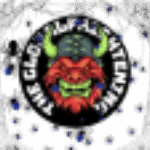Well, due to tiredness, I thought that I’d ramble about old paperback books today. This was something I ended up thinking about in mid-March when I was waiting for my computer to restart and found myself looking at forgotten corners of my bookshelves.
These were books old enough to have actually found room on the shelves – rather than the random book-piles – when there was still room on there. Because “When there is no room on the shelves, the books shall walk the Earth” (And, yes, that pithy line was shamelessly cribbed from the tagline of an old horror movie novelisation).
And, with the exception of the manga, I haven’t actually read much of these specific books yet. Maybe at some point in the future, but my “to read” pile is sort of its own thing and I’m getting through it slowly enough as it is…
Despite not really being that into Stephen King novels, I found an old six-part set of “The Green Mile” (1996), which was originally published in novella-sized paperback instalments. I found a random collection of sci-fi short stories from 1975-6 that I almost certainly bought from a second-hand shop in about 2006-10, I found a random French-language “Dragonball Z” manga paperback from 2000 which I vaguely remember buying from a Leclerc or Carrefour supermarket during a childhood holiday to northern France and, to my delight – and I think this was a gift from one my uncles during the early-mid 2000s – a 1972 paperback of Frank Chandler’s novelisation of Sergio Leone’s “A Fistful Of Dollars” (1964).
Of course, these weren’t the only old books that I found – the same part of the shelf also contained two random “Wordsworth Classics” reprints which are both from 1993. Yes, you can read these public domain classics for free on sites like Wikisource and Project Gutenberg, but there’s just something to these old reprints which also have old paintings on the cover. Back in the day, these “classics” editions (and I also love the later “blue band” cover design Wordsworth used during the late 2000s as well) were usually sold very cheaply and were pretty much the easiest way to read anything that was out of copyright.
Plus a 1998 sampler book from a – probably defunct by now – bookshop called Hammicks called “Destination: Voyager” which contains random chapters of sci-fi and fantasy novels. I remember being amazed by it when I was about ten or eleven years old because it was like a paperback version of a computer game “demo disc”. Although I maybe only read a few pages of it back then, just the idea of it was beyond cool. I used to be fascinated by demo discs, and not only was there one in book form but it also had an amazing purple cover as well. Seriously, why aren’t these a thing in 2025?

Click for larger image) It’s like a demo disc.. but for paperback books. Seriously, the 1990s were so cool 🙂 Plus, looking at the inside cover of the Erskine Childers reprint, I got it second-hand from a charity shop for just 79p at some point during the 2000s as well. Interestingly, the cover painting isn’t a J.M.W Turner one but is actually by another 19th century painter called Terrick Williams.
But this isn’t a “bookshelf tour” article. I mention these old books because there’s just something about old paperbacks. A fair number of the old books I have were already old when I stumbled across them in second-hand shops and charity shops during the 2000s. Because this was a time where you could often just find random sci-fi and horror paperbacks from the 1960s-1980s being sold for maybe a couple of quid each at the absolute most. These old books weren’t “collector’s items” or anything like that, but were something cheap that was meant to be read.
Even as late as 2010, I remember reading a random 1960s/70s paperback of Harry Harrison’s “Deathworld”. It was something I bought from a second-hand shop for less than £3 and mostly just carried around in the bottom of my bag and read whenever I had any spare time whilst visiting libraries or going shopping (because, well, I didn’t have a smartphone… and still don’t). And, damn it, I miss those days! I miss when old books were common and cheap things! Where they were meant to be read rather than kept in hermetically-sealed display cases or re-sold for extortionate prices online!
Maybe I don’t have the appropriate amount of reverence for these old books because, again, I remember when they were fun low-budget entertainment? But they are cool though. Not only did old paperbacks have much better and more interesting cover art than many modern ones, but the “old book smell” is a real thing and it literally gets better with time. Plus, although pristine new pages are “more readable”, there’s just something to old yellowed paper as well.
And, if you have old paperback books, then it’s usually worth keeping them – rather than throwing them out to “free up space” or whatever – because they’re more difficult to replace these days, due to the greedy resellers I mentioned earlier. Because they’re artefacts from an age – not even twenty years ago – when you could just find these old 1960s-80s books in second-hand shops for next to nothing, sold to people who at least intended to read them at some point. And because you’d find these in physical shops, the selection would often be a bit random and you’d stumble across all sorts of interesting books and authors that you hadn’t even heard of before. Because these old books were cheap, you were more likely to take a chance on different authors as well.
Case in point, one of the authors I discovered during my binge-reading phase in 2018-20 was the sci-fi author Joan D. Vinge and I discovered her because, back in about 2009-10, I stumbled across her 1984 novel “World’s End” in a second-hand shop and just had to buy it (for maybe £1-3) because of the cool cover art. It sat on a book pile, totally unread for about a decade, until I rediscovered it and read it.
Old books, especially ones bought during the 2000s, are worth keeping because they are relics of a time when reading was both more common and less “trendy”. When old books were sold cheaply to people who might actually read them, rather than being sold for extortion-prices to “collectors” who have no intention of ever actually reading even a single page of them.
————————
Anyway, I hope that this was interesting 🙂






